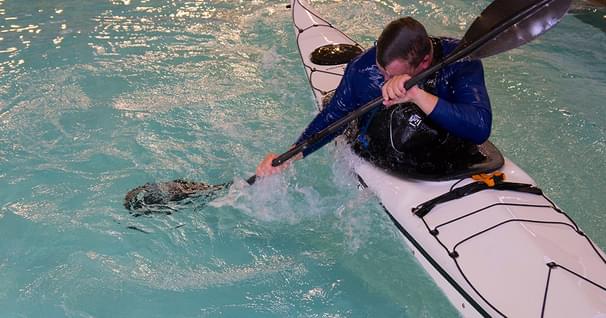Getting Back On Your SUP
Fear of falling off the board is one of the primary concerns that keeps people from trying stand up paddle boarding. So right off the bat it's important to know that if you're using the right board and paddling in calm, sheltered water, falling off the board is fairly uncommon. That being said, you need to be prepared in case it does happen. That means wearing a life jacket and also a leash to avoid getting separated from your board, and you need to know how to get back on your board from the water, which is what we're going to look at in this video.
Before we talk about how to get back on your board let's first talk about how to safely fall off your board. First off, you want to fall away from your board and avoid landing on your paddle. It's also important that you don't dive head first off your board because you don't know what's under the surface. Although you'll always want to try to hold onto your paddle, if you have to choose between your board and your paddle, you're going to want to always choose your board. You can use your board to go retrieve your paddle, but it doesn't work the other way around, and this is why a leash is such an important piece of safety equipment.
Once you're in the water you can either climb back onto your board from the side or from the tail. If you climb back up from the side, grab the carry handle and let your feet float to the surface behind you. With a strong kick of the legs and pull of the arms you can drag yourself onto the board in a face down lying position. The other option is to climb up from the tail, and this is easier on boards that let you push the tail underwater as you slide your body onto the board. Be aware that your life jacket may get hung up on the edge of the board while you're doing this. Once you're back on your board and you've retrieved your paddle, you'll pull yourself up onto your knees. Now you'll want to look towards the horizon tuck your toes and one at a time bring your knees up to your chest and place your feet flat on the board. You'll then just press up like doing a squat, keeping your back straight.
If you're in the surf zone or other rough water, you'll probably want to lay down until you can paddle to calmer water. When doing this, tuck your paddle under your chest so that it's out of the way and immobilized, and then hand paddle your board like a surfboard.
Related Articles
As the days get shorter and the weather gets colder, it becomes harder to get out and paddle and easier…
Mention “pool session” and the first image that pops into most kayakers minds is a class in how to roll.…
Paddling alone is a recipe for danger. Bring a buddy and stay safe on the water.



